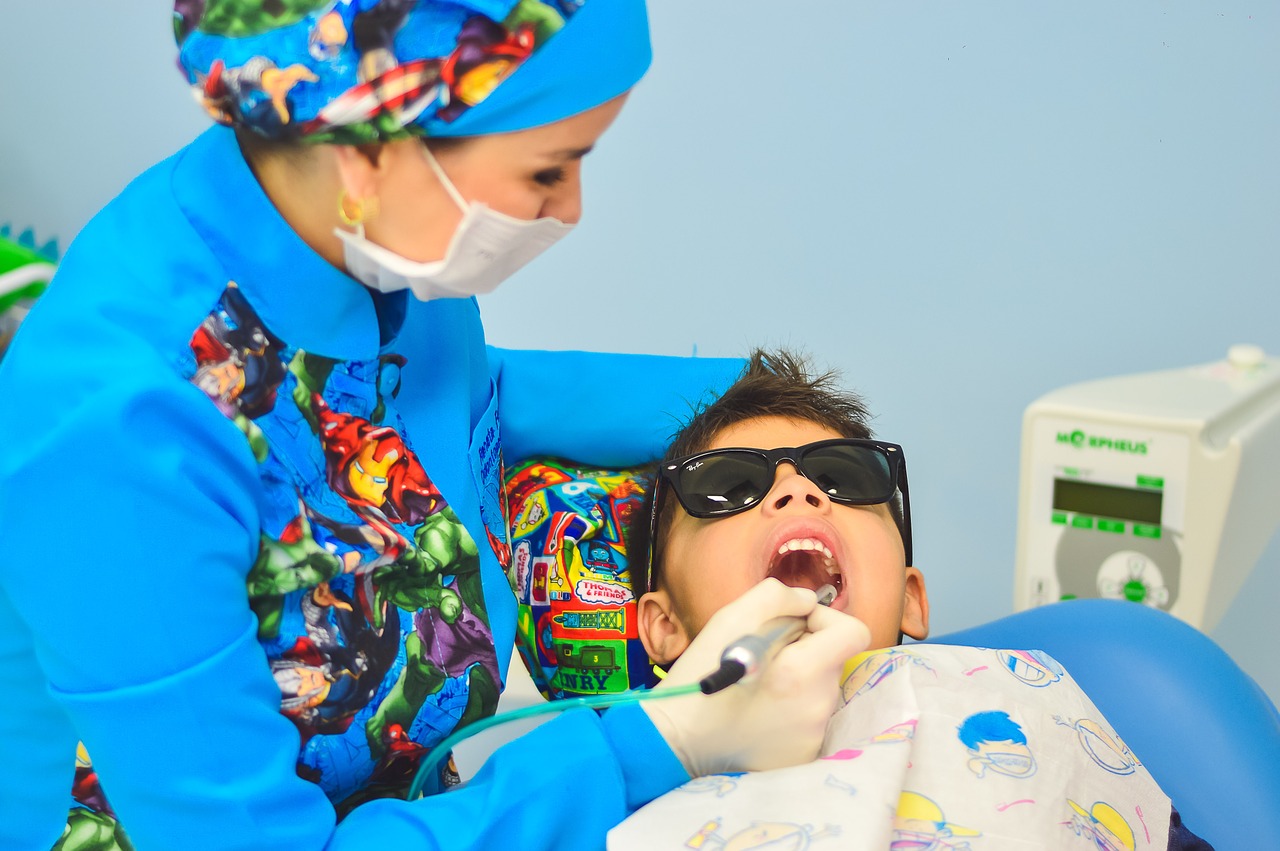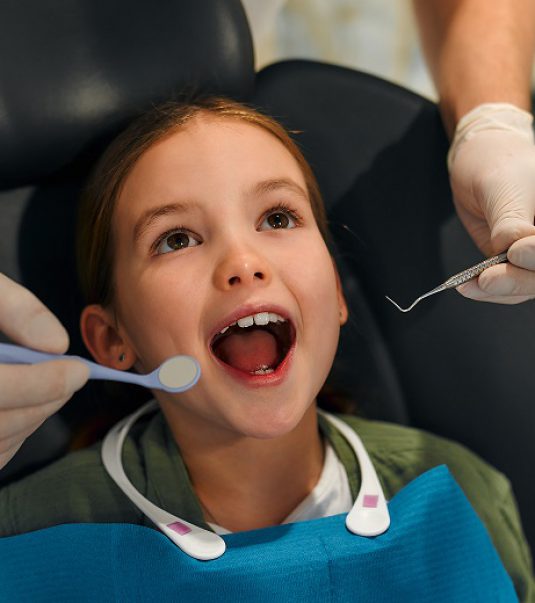A Comprehensive Guide to the Numerous Treatment Choices Offered in Pediatric Dental Care for Kid
In pediatric dentistry, comprehending the varied therapy alternatives readily available is essential for making sure optimum oral health and wellness in children. From precautionary care methods that develop a foundation for lifelong dental hygiene to corrective therapies that address instant issues, the series of solutions is comprehensive. Furthermore, orthodontic options and specialized strategies for youngsters with unique needs even more improve the scope of practice. As we explore these various options, it ends up being clear that tailored care is not just helpful yet essential for cultivating a favorable dental experience. What particular considerations should direct these treatment choices for young individuals?
Preventive Care Options
Preventative treatment choices in pediatric dental care are crucial for maintaining kids's dental wellness and protecting against future dental concerns. These strategies focus on educating both children and parents concerning correct oral hygiene techniques, dietary options, and regular oral sees.
Among the main elements of precautionary treatment is routine oral examinations, usually recommended every 6 months. Throughout these sees, dental specialists can determine potential issues early, provide cleanings, and use fluoride therapies to strengthen enamel and lower the risk of dental caries. Furthermore, dental sealants might be related to the chewing surface areas of molars, acting as a safety barrier against degeneration.
Education on appropriate cleaning and flossing techniques is likewise essential. Parents are motivated to supervise their kids's dental hygiene routines up until they establish the mastery to do so independently. Additionally, dietary therapy can assist family members understand the effect of sweet snacks and drinks on dental health, advertising healthier choices.
Corrective Treatments
Resolving oral concerns that develop in spite of preventive measures, restorative therapies in pediatric dentistry play a crucial role in bring back a youngster's oral wellness. These treatments are developed to repair and fix up teeth influenced by degeneration, injury, or developmental anomalies.

Common corrective alternatives consist of dental fillings, crowns, and pulpotomies. Dental fillings are used to treat tooth cavities by eliminating decayed tissue and filling up the area with products such as composite resin or dental amalgam. For more comprehensive degeneration or architectural damages, crowns might be suggested to give stamina and security. Pediatric crowns are usually crafted from stainless-steel or tooth-colored products to make certain durability and aesthetics.
In cases where the oral pulp is influenced, a pulpotomy may be essential to ease discomfort and stop additional infection. This procedure includes the elimination of the infected pulp and securing the tooth to maintain its feature.
Orthodontic Solutions
Orthodontic services are important in aligning teeth and remedying bite concerns in kids, ensuring optimum dental health and wellness and feature. Pediatric orthodontics concentrates on the one-of-a-kind oral development of youngsters and teenagers, attending to issues such as imbalance, overcrowding, and jaw disparities.
Early analysis, normally suggested by age 7, enables prompt treatment, which can avoid extra complex issues in the future. Typical orthodontic home appliances consist of braces, retainers, and area maintainers. Typical metal braces are frequently used for their performance in remedying various dental issues, while clear aligners supply a more visual more info here alternative for older youngsters and teenagers.
In specific situations, interceptive orthodontics might be used, where certain therapies are launched to guide the growth of the jaw and teeth. This positive technique can lower the demand for extensive orthodontic work later on. Furthermore, useful home appliances might be made use of to enhance jaw relationships and improve face proportion.
Sedation Dental Care
Utilizing sedation dentistry can considerably minimize stress and anxiety and discomfort in pediatric patients during dental treatments (kids dentist). This strategy is especially beneficial for youngsters that fear regarding dental visits or call for considerable therapy that might be unpleasant. Sedation techniques vary, ranging from mild sedation with nitrous oxide (laughing gas) to deeper sedation methods carried out intravenously
Nitrous oxide is a common selection, as it is secure, reliable, and permits quick recuperation. It causes a calming result, making it possible for kids to continue to be kicked back throughout the procedure while still having the cheap dentist ability to interact with the oral team. For even more complicated therapies, dental sedation or general anesthetic may be taken into consideration, particularly for kids with unique needs or those that might not work together throughout treatment.

Unique Needs Dentistry
For several children with special needs, dental sees can be particularly testing as a result of sensory sensitivities, interaction barriers, or clinical conditions that call for tailored strategies. Special requirements dental care is a customized field that concentrates on supplying comprehensive oral take care of youngsters with numerous physical, developing, or psychological obstacles.
Practitioners in this field are educated to comprehend the unique requirements of these people, using techniques to minimize anxiety and pain. This might consist of making use of visual aids, social stories, and hands-on demonstrations to aid children comprehend the oral treatments. In addition, the environment is often adjusted to accommodate sensory sensitivities, creating a much more welcoming and much less daunting room.

Ultimately, the objective of special needs dentistry is to promote favorable oral experiences, advertise dental wellness, and develop a structure for long-lasting treatment, enabling children with special needs to attain optimum oral wellness.
Conclusion
In recap, pediatric dentistry incorporates a vast variety of treatment choices vital for promoting and preserving kids's oral health. Precautionary care establishes a foundation for lifelong oral hygiene, while corrective therapies attend to existing dental issues. Orthodontic solutions facilitate proper jaw development, and sedation dental care boosts comfort throughout procedures. Additionally, specialized treatment for kids with special demands guarantees favorable experiences and motivates ongoing oral health and wellness. Collectively, these approaches play a crucial role in sustaining the dental wellness of all children.
Oral fillings are used to deal with tooth cavities by eliminating corroded tissue and loading the room with materials such as composite resin or oral amalgam. Traditional metal dental braces are frequently made use of for their effectiveness in remedying various dental issues, while clear aligners offer an even more visual option for older children and teens.
It causes a soothing impact, allowing youngsters to remain unwinded throughout the treatment while still being able to interact with the medicaid dentist dental team. Preventative care establishes a foundation for long-lasting oral health, while corrective treatments deal with existing dental issues. Jointly, these approaches play an important function in supporting the dental wellness of all children.